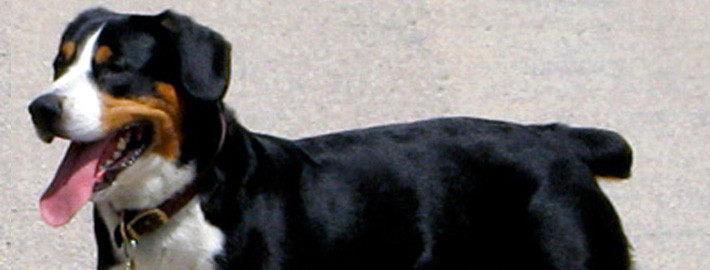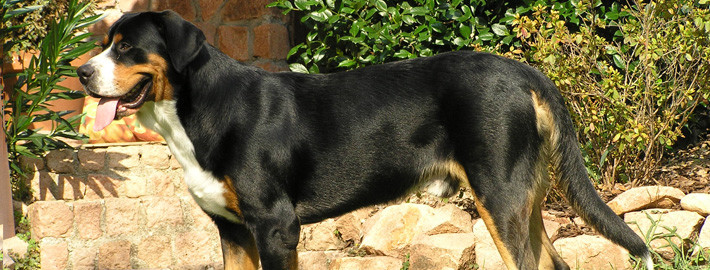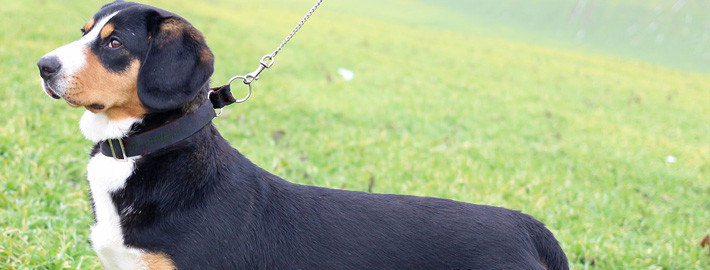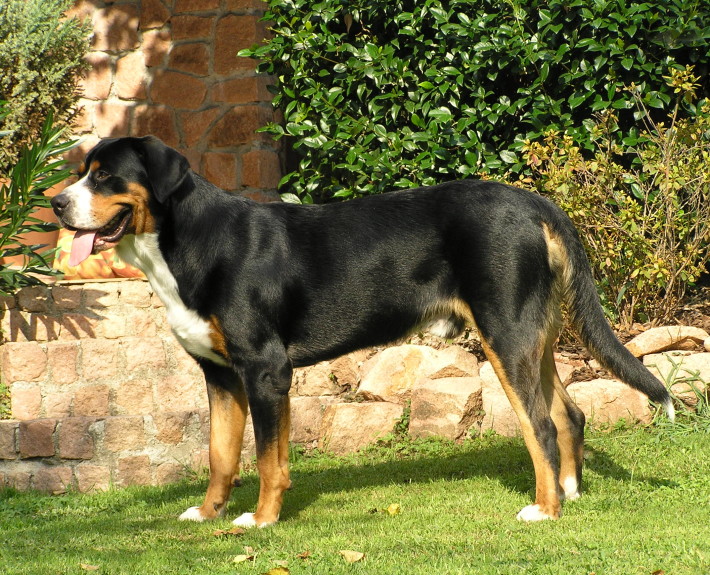What makes the Entlebucher Mountain Dog Unique?
The Entlebucher Mountain Dog is a square, sturdy dog with typical working dog features. It has small, triangular ears and rather small, lively brown eyes. The head is well proportioned to the body, with a strong, flat skull. The long jaw is well formed and powerful. The feet are compact, supporting its muscular body. The smooth coat is close and harsh with symmetrical markings of black, tan and white. Alert and very eager to please, it was first used as a cattle driver; today it is used as a livestock guarder and a companion. The Entlebucher needs a firm, but calm, consistent pack leader who can properly communicate with the canine animal.
Breed Groups
Page Contents
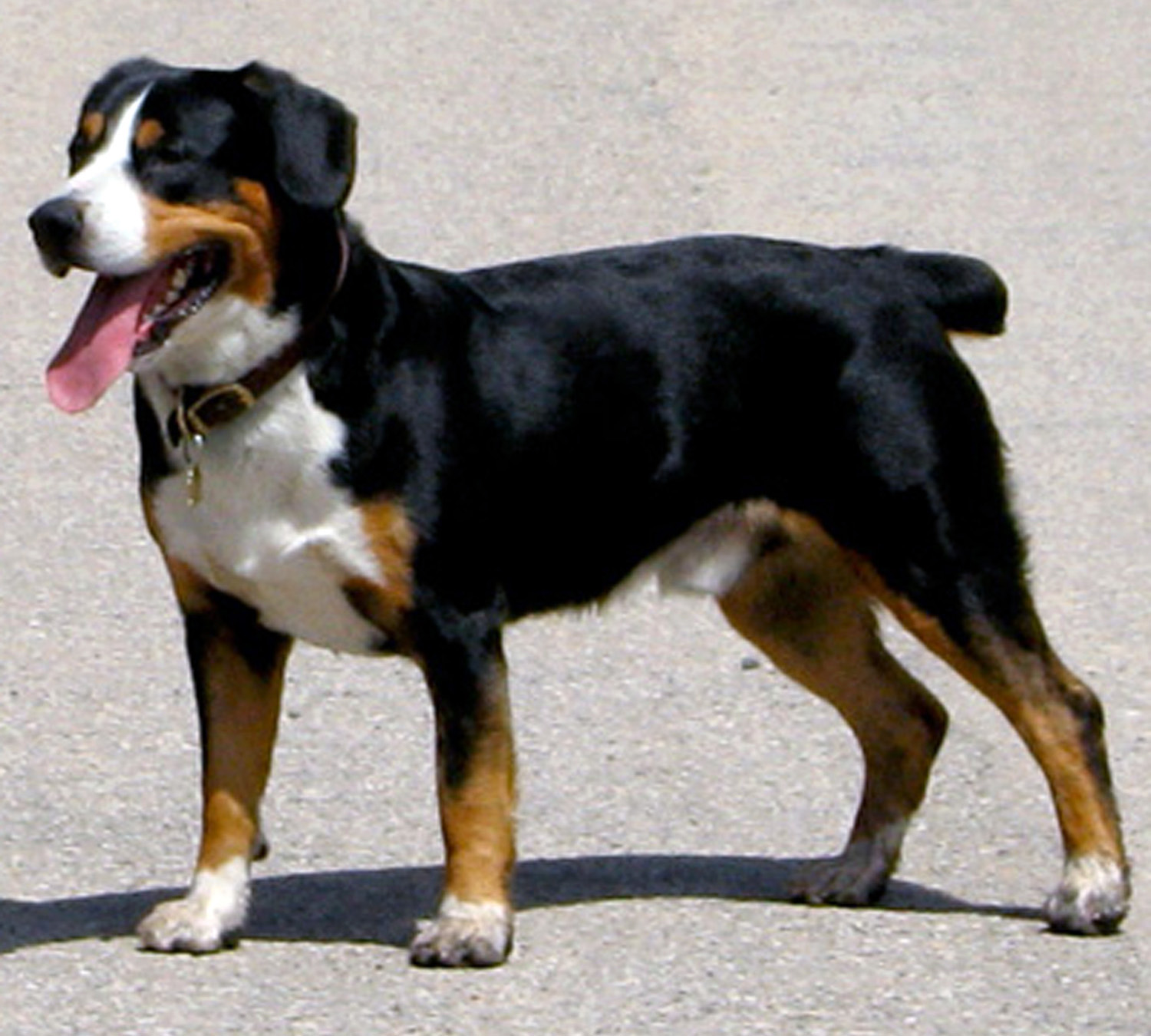
Is the Entlebucher Mountain Dog Right For You?
The Entlebucher Mountain Dog has a work ethic that won’t quit and is known for his extreme devotion to his people. The Entlebucher, or Entle, is very protective of his family. His greatest happiness is being part of an active family that loves him and considers him worthy of doing a job, whether that is practicing his training every day, competing in agility, helping parents watch the kids, or being a therapy dog. Any type of job will do, but he has to have one. Being a watchdog is one way the confident and determined Entle contributes to his family’s well being. Typically he barks only when he has reason to, and not just for the sake of hearing himself. He’s wary of strangers, and territorial, making him an excellent watchdog. His bark is pretty big for a dog his size, which adds to his prowess at this job.
In 5 Words
- Intelligence
- Agility
- Loyalty
- Energetic
- Active
Characteristics
Learn About the Entlebucher Mountain Dog
Description
The Japanese Akitas are only allowed in the colors of red, white, or brindle. Those dogs with loose skin, a black mask, or too much mass are not acceptable in the show ring because these characteristics generally mean crossbreeding has occurred. In the United States, Canada, Britain, and the rest of the non-FCI regulated areas no difference in type is made and all colors are allowed. The Akita comes in short and long coat varieties, but the latter is considered a fault in the show ring. The long coat only occurs when two carriers of the recessive trait have offspring. Akita females give birth to between 3 and 12 puppies in each litter.
The Japanese dogs are typically smaller and more like foxes in build than their American counterparts are. Male Japanese Akitas measure 64–70 cm. (25 ¼–27 ½ in.) at the withers, or the shoulder blades, and weigh between 70–85 pounds (32–39 kg.). Female Japanese Akitas weight between 50–65 pounds (23–29 kg.) and stand 58–64 cm. (22 ¾–25 ¼ in.) at the withers.
Female American Akitas weigh 80–120 pounds (36–54 kg.) and are 24–26 inches (61–66 cm.) at their withers. By contrast the male American Akita weighs around 100–145 pounds (45–66 kg.) and stands 26–28 inches (66–71 cm.) at the withers.
Short History of the Entlebucher Mountain Dog
The Entlebucher is named after a town and region in the Swiss canton of Lucerne. It is the smallest of the Swiss mountain dogs. While its origin is not certain, it is thought to be descended from the fighting and guarding mastiffs of the Roman legions. This breed is popular in Switzerland, but is rarely seen outside its native land. This rare breed was saved by the diligent efforts of Franz Schertenleib. Schertenleib heard of the many different Swiss mountain dogs that existed. the Entlebucher, descend from mastiff-type dogs brought by the Romans more than 2,000 years ago. The dogs that became the Entlebucher was used to herd cattle to and from mountain pastures.
The dogs were first called Entlebucherhund in 1889. They were little known and generally considered the same breed as the Appenzell Cattle dog until 1913. That year, four of the dogs were exhibited at a Swiss dog show. Based on the judges’ reports, they were classified in the Swiss Canine Stud Book as a fourth Mountain and Cattle Dog breed. Even so, it wasn’t until 1927 that a standard was written for them, after the founding of the Swiss Club of Entlebuch Cattle Dogs in 1926.
Temperament
The Entlebucher Mountain Dog is a very devoted and loyal dog. It is independent and self-confident yet the dog can be very attached and affectionate to its masters. It is not uncommon to see an Entlebucher Mountain Dog happily strolling alongside its master. The normally rambunctious and playful Entlebucher Mountain Dog, if trained properly, can be quite good with children. If you want a guard dog or an alert dog, the Entlebucher Mountain Dog can fit the bill as this dog is quite territorial and is generally suspicious of strangers.
Caring for Your Entlebucher Mountain Dog
General Health
While the Entlebucher Mountain Dog is typically known as a healthy and hearty breed, they do suffer from a few health problems, including: hip dysplasia, patellar luxation – dislocation of the knee, various joint problems such as arthritis, bloat, and Hemolytic Anemia – anemia caused by the abnormal breaking down of red blood cells.
Grooming & Bathing
Entlebucher Mountain Dogs are low-maintenance and require very little grooming. A good brushing every few weeks is usually all that is necessary to keep their short, thick coats tidy and shiny. This breed sheds a moderate amount, more so during the warm spring and summer months. They only need an occasional bath.
Exercise & Training
Entlebucher Mountain Dogs are highly intelligent, which makes them very trainable. However, they are strong-willed, which can make them challenging for first-time dog owners. Entlebuchers should be socialized from birth, to ensure that they remain friendly and well-mannered. They are deceptively strong for their size and are resistant to pain. As a result, physical corrective training techniques are not effective with this breed. Entlebuchers need consistent, reward-based, positive reinforcement during training. Praise, petting and treats are much more effective than harsh commands or physical punishment with this breed.

